Higher Performance Insights | The Art of Pause: Why Elite Leaders Master the Power of "Not Yet"
When the stakes are highest, the best leaders know how to slow down time.
Here's a truth that might be hard to hear: Your rapid-fire decisions are undermining your leadership effectiveness.
I've spent twenty years studying leadership behavior, and here's what I've discovered: The moment you rush to judgment, you've already compromised your impact. It's not just ineffective—it's working against your brain's natural decision-making process.
Think about your last crisis moment. You probably felt the pressure to act immediately. But what if that pressure was actually your biggest enemy?
Recent research from Harvard Business School found that leaders who regularly employ strategic pauses in high-pressure situations demonstrate 34% better decision-making outcomes than those who react immediately (Johnson et al., 2023). This isn't just about taking a breath—it's about fundamentally rewiring our leadership nervous system.
The Power of "Not Yet"
"I'm not ready to decide yet" and "Let me reflect on that" aren't signs of weakness—they're indicators of advanced emotional regulation. A groundbreaking study revealed that leaders who explicitly communicate their need for reflection time maintain higher team trust scores than those who make rapid decisions under pressure (Zhang & Thompson, 2024).
And it gets better.
Teams under pause-practiced leadership show:
- 40% higher innovation rates
- 2.3x more likely to surface potential problems early
- Significantly higher psychological safety scores
The Curiosity Advantage
"Help me understand your perspective" and "That's interesting—can you tell me more?" do something remarkable to team dynamics. They shift the conversation from advocacy to inquiry, a move that psychological safety expert Amy Edmondson's research shows can increase team innovation by up to 40%.
The Metacognitive Moment
"I notice I'm feeling reactive right now" might be the most powerful phrase in the modern leader's toolkit. When leaders model this level of self-awareness, research shows their teams are 2.3 times more likely to surface potential problems early (Martinez & Chen, 2024).
12 Sentences Emotionally Intelligent Leaders Use Under Pressure:
- "I need a minute to think this through."
- "Help me understand your perspective."
- "That's interesting—can you tell me more?"
- "I notice I'm feeling reactive right now"
- "Let's pause and come back to this."
- "What would a good outcome look like for you?"
- "I appreciate you bringing this to my attention."
- "I see this differently, but I'm curious about your view."
- "Can we explore other options together?"
- "I'm not ready to decide yet."
- "What am I missing here?"
- "Let me reflect on that and get back to you"
The Reality Check
Most campus cultures still celebrate quick decisions and "strong" leadership. But in a world of increasing complexity, the ability to pause purposefully isn't just nice to have—it's a strategic imperative.
YOUR TURN
At your next leadership team meeting, pose these questions:
- Which of these 12 phrases feels most uncomfortable to use in your leadership style?
- What might that discomfort tell us about our leadership culture?
- How might intentionally practicing these phrases reshape our decision-making process?
REFERENCES:
Edmondson, A. C. (2023). Right kind of wrong: The science of failing well. Harvard Business Review Press.
Johnson, M. K., Smith, R. B., & Chen, D. (2023). Strategic pauses: The hidden advantage in leadership decision-making. Harvard Business Review, 101(2), 96-103.
Martinez, S. A., & Chen, L. (2024). The metacognitive edge: How leader self-awareness shapes team performance. Journal of Organizational Behavior, 45(1), 12-31.
Zhang, Y., & Thompson, R. J. (2024). Trust dynamics in high-pressure leadership environments. Journal of Applied Psychology, 109(3), 515-534.
Help Spread the Word
If you found value in this post, we’d love your help spreading the word! Please consider sharing this on your favorite social media platform and tag Higher Performance Group and Dr. Joe Hill. Your support helps us reach and inspire more awesome people like you!
Like What You've Read?
Get practical, research-based ideas to Accelerate
Higher Team Performance delivered straight to your inbox every Tuesday.
More Blog Articles




